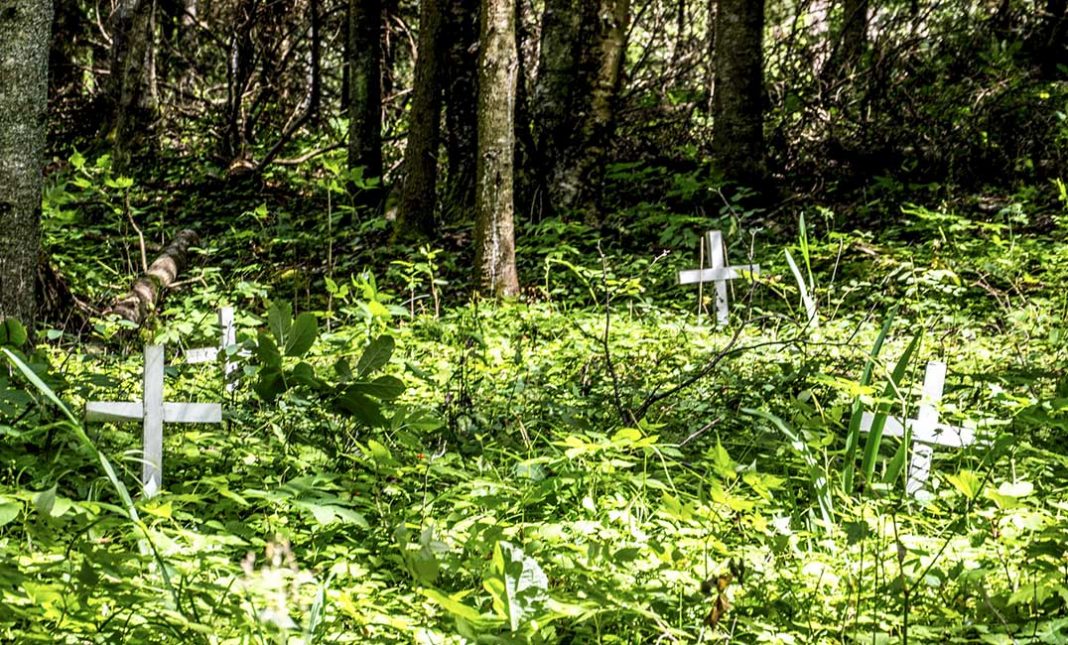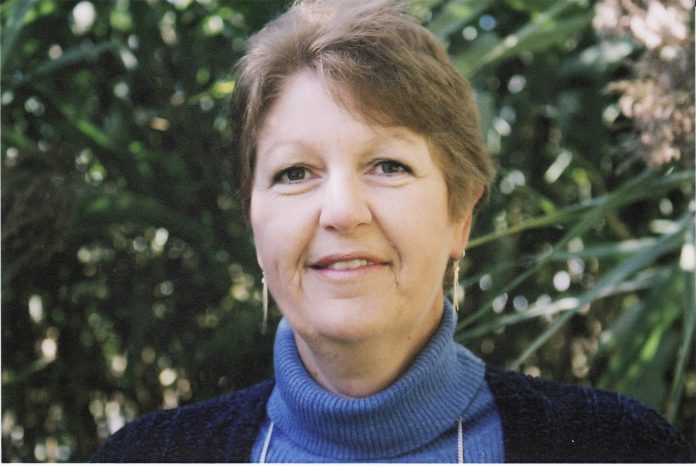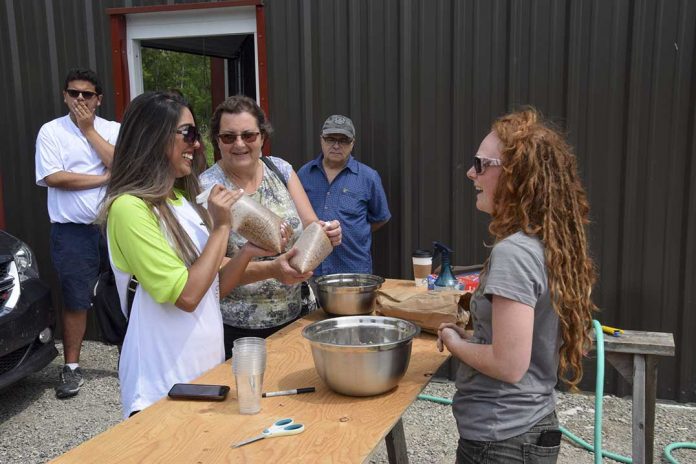by Isobel Harry
Many places on the Island used to exist but are no longer—names like Snowville, Foxey and Squirreltown are but ever more distant reminders of places, people and times we now barely grasp. Of all of Manitoulin’s vanished towns, the most spectacular in its ascent and disappearance is no doubt Michael’s Bay, in the bucolic township of Tehkummah in Manitoulin’s southeast.
After the Treaty of 1862, when the resident Indigenous population was consigned and moved to reserves, Manitoulin Island was opened to white settlement. The survey of Tehkummah Township was completed in 1865 and in 1866 a timber licence was bought for 22 square miles of land across the townships of Tehkummah, Sandfield and Carnarvon. For $2,000, an MP from Halton, John White, and a group of Milton businessmen including brothers Robert and William Lyon and the surveyor himself, George Abrey, bought the large parcel of forested land straddling both sides of the Manitou River down to the mouth of Michael’s Bay in Lake Huron. Sided by the Blue Jay Creek in the east, the site was perfect for the water-powered lumber milling operations that soon began to run “twenty-fours a day” in 1868. That year, an additional 200 acres was added to the deed to serve as the town plot.
Thus began the famed era of the Island’s lumber boomtowns—although it’s hard to picture now just how big a boomtown was Michael’s Bay in its heyday. Driving down Michael’s Bay Road today is a purely pastoral experience: tall grass lining both sides, a cottage or two, the Manitou River curving lazily into the bay at the bottom, a tranquil oasis for a lazy lookaround. The old town site can’t be seen from the road, so overgrown is it with grasses, wildflowers and trees, but it can be felt.
Here were Indigenous fishing settlements on the shores since the 1600s – until Michael’s Bay became ‘Stumptown,’ the only town on Manitoulin dedicated solely to logging and milling the lush forests that carpeted the Island. They say that’s what caused the meteoric rise and wretched end of the Island’s busiest town, once a thriving metropolis of sorts, all services and facilities in place from school, church, post office and general store to hotels, taverns, boarding houses for workers and homes for families, all laid out in a grid of streets and plotlines. The non-stop shipping of timber products (carried by tramway from the mill to the dock) necessitated the building of a lighthouse in 1871.
Hearsay became local legend over the century spanning the fiery finish of the town of Michael’s Bay (now considered as possibly closer to 1916) and today.
Thanks to the masterly research of local historian Derek Russell, whose ancestors settled on Manitoulin in the 1870s—many in Tehkummah—much of what is known is corroborated, but “a great deal has been disproved” and a much more complex story of the lost boomtown emerges in ‘Michael’s Bay: The Rise and Fall of Manitoulin Island’s Forgotten Town.’ Mr. Russell’s book, now in its second printing, presents the gripping story as found in issues of The Expositor from the 1800s, in rare photos, lists of residents, births and deaths and eye-popping maps of the town that far outmeasure most Manitoulin towns of today.
Robert Lyon, a wealthy buyer of the timber land licence in 1865, became the de facto ‘owner’ of the town of Michael’s Bay as an employer at his Toronto Lumber Company mill and as the major funder for the new roads and lighthouse; streets were named after his family, he became a school trustee and the postmaster. Later, Lyon was elected to the Legislative Assembly to represent Algoma under somewhat scandalous circumstances involving allegations of improper voting and bribery, all covered in searing detail by Mr. Russell.
By the mid-1880s, the population of Michael’s Bay had grown to 400 souls. Half a dozen years later, the lumber gold rush was over and the fortunes of the town inexorably began to decline. US import tariffs put an end to the cedar industry, and in 1890, many residents left, including the Lyon family; funding for the school was denied; the lighthouse was decommissioned in’99; the post office closed; and so it went.
There are no contemporary records or accounts of the final conflagration, but 50 years later one recollection blamed the blaze on a small brush fire, accidentally started and carried through the town by the wind. But Mr. Russell concludes that a revengeful local, one Samuel Murray, infamous for showing up in and getting thrown out of high places and other strange behaviours, might have set the fire deliberately, out of spite. Despite the author’s thorough investigative efforts, that mystery likely will go on being mysterious, forever,
Derek Russell writes: “All that would remain were trails in the otherwise empty field–crisscrossing between stone cellars where buildings once stood.”
The Michael’s Bay town site is under the auspices of the Federal Government due to an ongoing series of complicated previous land dealings; other outstanding issues, including the Indigenous burial grounds and Anishinaabe land claims, must be resolved. The old ghost town is closed to public access, “the merriments and misfortunes–the amusements and melancholies…” muffled by birdsong and the babbling of the Manitou River somewhere beyond the trees.
The Little Schoolhouse Museum has artifacts, old survey maps and genealogies of Michael’s Bay and ‘Michael’s Bay: The Rise and Fall of Manitoulin Island’s Forgotten Town’ by Derek Russell is available for browsing and for sale.
Little Schoolhouse and Museum, South Baymouth: Tel: 705-859-3663. Open daily (May to October) 9:30 am to 4:30 pm. Admission by donation.





